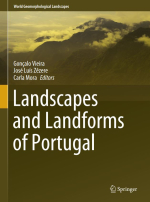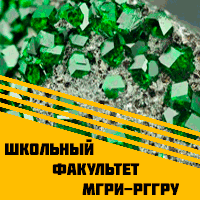Добрый день, Коллеги. Важное сообщение, просьба принять участие. Музей Ферсмана ищет помощь для реставрационных работ в помещении. Подробности по ссылке
Landscapes and landforms of Portugal / Ландшафты и формы рельефа Португалии
Landscapes and Landforms of Portugal volume presents, for the first time, a series of synthesis chapters on landscape highlights of mainland Portugal, covering a wide diversity of geomorphological settings. These are presented with language and graphic styles that try to bridge-the-gap from professional scientists to undergraduate students, while being also accessible to all those interested in the earth sciences, to help for a better understanding of landscape evolution and specific features of the Portuguese landforms. The authors are physical geographers and geologists, mostly from Portuguese research institutions, all of them having had conducted research in the regions which they present. The main objective of the book is to provide a good overview of the geomorphology of Portugal, but also of its links with human occupation of the territory, geohazards and geoheritage management. This book is a tribute to Prof. António de Brum Ferreira, who has been an inspiration for generations of geomorphologists and students.
Landforms and Landscapes of Portugal volume is organized in five thematic parts, i.e. 1. geomorphological setting, dynamics and hazards, 2. coasts, 3. mountains and valleys, 4. urban areas, 5. geoconservation and geoparks. In each part, chapters are ordered geographically from north to south, covering most of mainland Portugal (Fig. 1). Part I (Geomorphological Setting, Dynamics and Hazards) aims at presenting an introduction to the landscapes of Portugal, starting with a geomorphological synthesis by C. Ramos and A. R. Pereira (University of Lisbon, Chap. 1), followed by an overview of climate of Portugal by C. Mora and G. Vieira (University of Lisbon, Chap. 2), aiming to better understand geomorphological dynamics, especially the present-day one, but also providing a glimpse into Pleistocene and Holocene environmental conditions. J. L. Zêzere (University of Lisbon) presents a synthesis of geomorphological hazards at the national level (Chap. 3), while R. A. C. Garcia and S. C. Oliveira (University of Lisbon) present two examples of landslide hazardscapes (Chap. 4). Finally, S. C. Oliveira and co-authors (University of Lisbon) present a synthesis on land use planning and emergency management associated with geomorphological hazards in Portugal (Chap. 5). Part II (Coasts) includes reviews of several important sectors of the Portuguese coastline, its geomorphological characteristics and evolution. M. A. Araújo (University of Oporto) presents interesting features of the coast north of the city of Espinho, covering the morphostructure, rock control on landforms, the littoral platform and also the Cenozoic deposits and geomorphological evolution (Chap. 6). C. Neto and colleagues (University of Lisbon) focus their review on the Tróia Peninsula, a sand spit located at the Sado Estuary, close to Setúbal, and discuss its geomorphological characteristics and dynamics, linking it to the littoral drift and Holocene sea-level change (Chap. 7). Moving southwards, A. R. Pereira (University of Lisbon) presents the remarkable southwest coast of Portugal, marked by its littoral platform, tectonics and sediments (Chap. 8). Finally, D. Moura (University of Algarve) and colleagues introduce the rocky section of the Algarve, marked by its scenic cliffs, but also depositional environments and karstic terrains (Chap. 9). <...>




